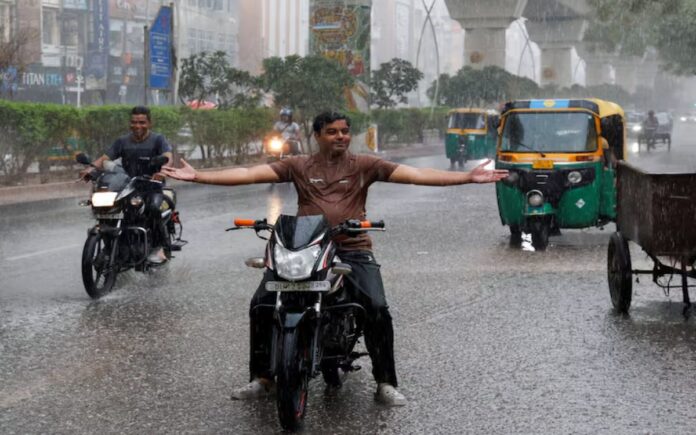New Delhi: India’s annual monsoon has made substantial progress, covering more than three-fourths of the country and is poised to cover the entire nation on schedule for the planting season, despite facing earlier delays this month, confirmed two senior weather officials on Thursday.
Critical for Asia’s third-largest economy, summer rains typically commence in the south around June 1st, spreading across the country by July 8th. This timeframe allows farmers to sow crops such as rice, cotton, soybeans, and sugarcane.
“Monsoon is advancing rapidly in northern India and is expected to cover the entire country on time,” stated an official from the India Meteorological Department (IMD), speaking anonymously due to authorization constraints.
The southwest monsoon’s progress on Thursday included the coverage of more regions in Rajasthan, most parts of Madhya Pradesh, additional areas in Uttar Pradesh, Bihar, and nearly all of Uttarakhand and Himachal Pradesh, according to IMD’s statement.
IMD data revealed that India has received 19% less rainfall since June 1st, reflecting the monsoon’s earlier stall, which resulted in most of the country, except for some southern states, experiencing deficits, with parts of the northwest enduring heatwaves.
As the lifeblood of India’s nearly $3.5-trillion economy, the monsoon supplies almost 70% of the required rainfall to irrigate farms and replenish reservoirs and aquifers. Without irrigation, about half of the country’s farmland, a major producer of rice, wheat, and sugar, relies on the annual monsoon rains spanning from June to September.
“Rainfall is intensifying, and substantial rainfall is anticipated across most regions in the coming fortnight, accelerating the sowing of summer crops,” noted another weather official. He added that the current rainfall deficit is expected to diminish significantly by mid-July.



